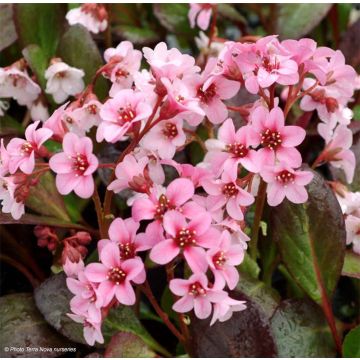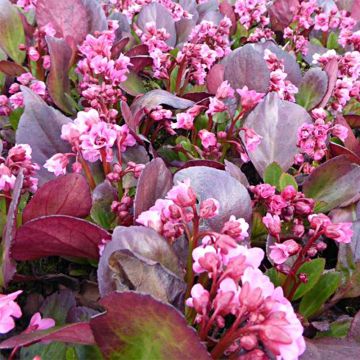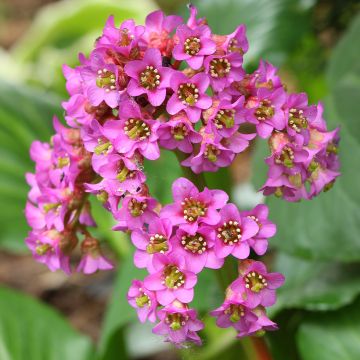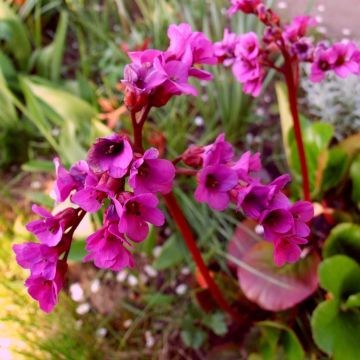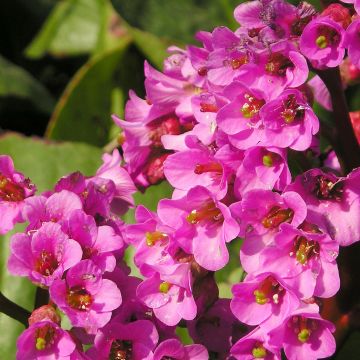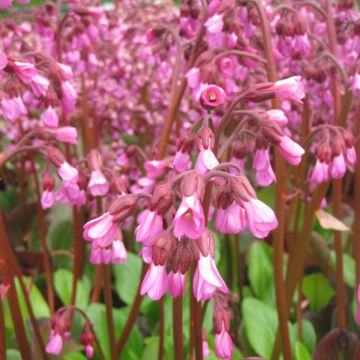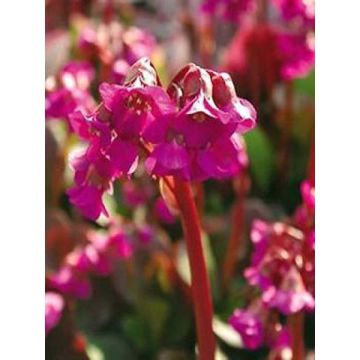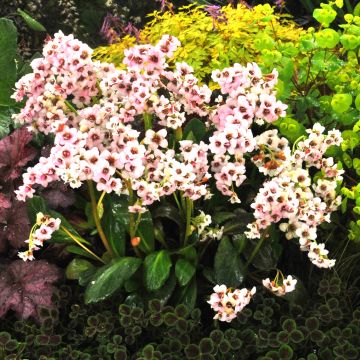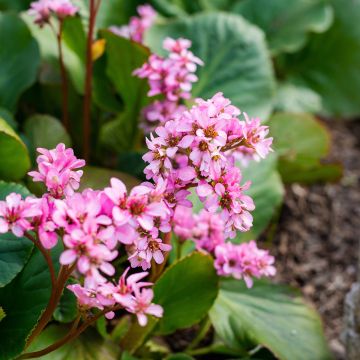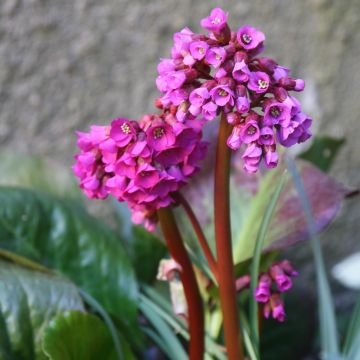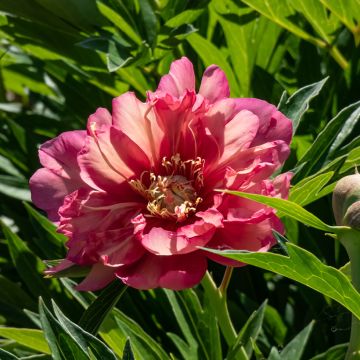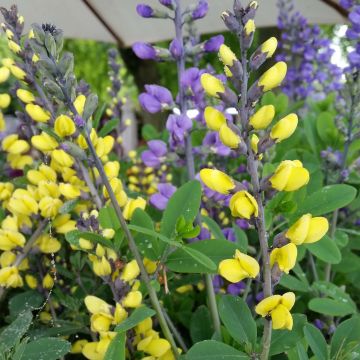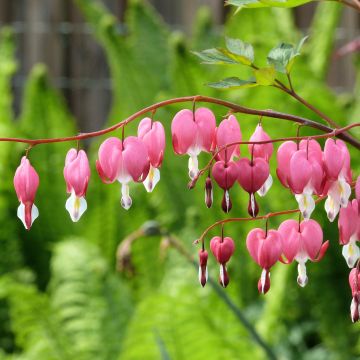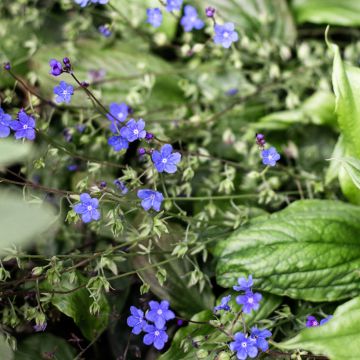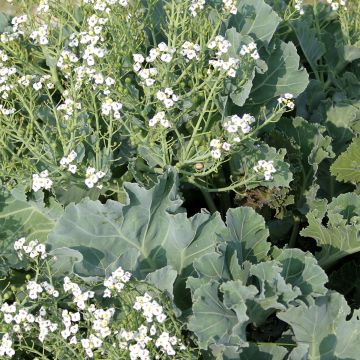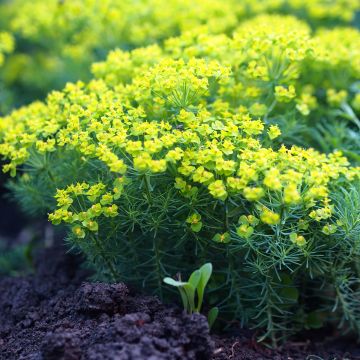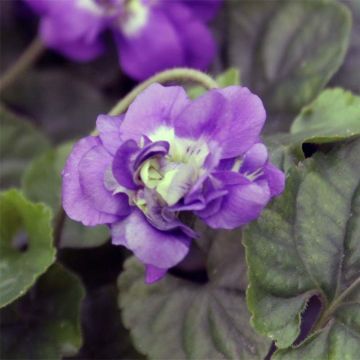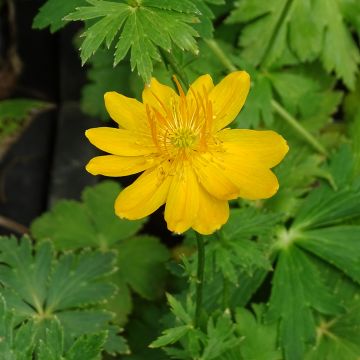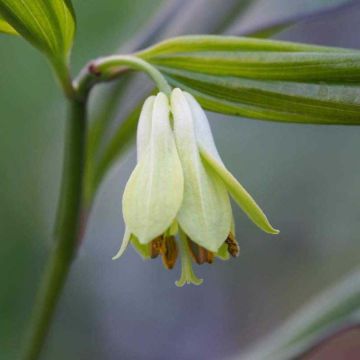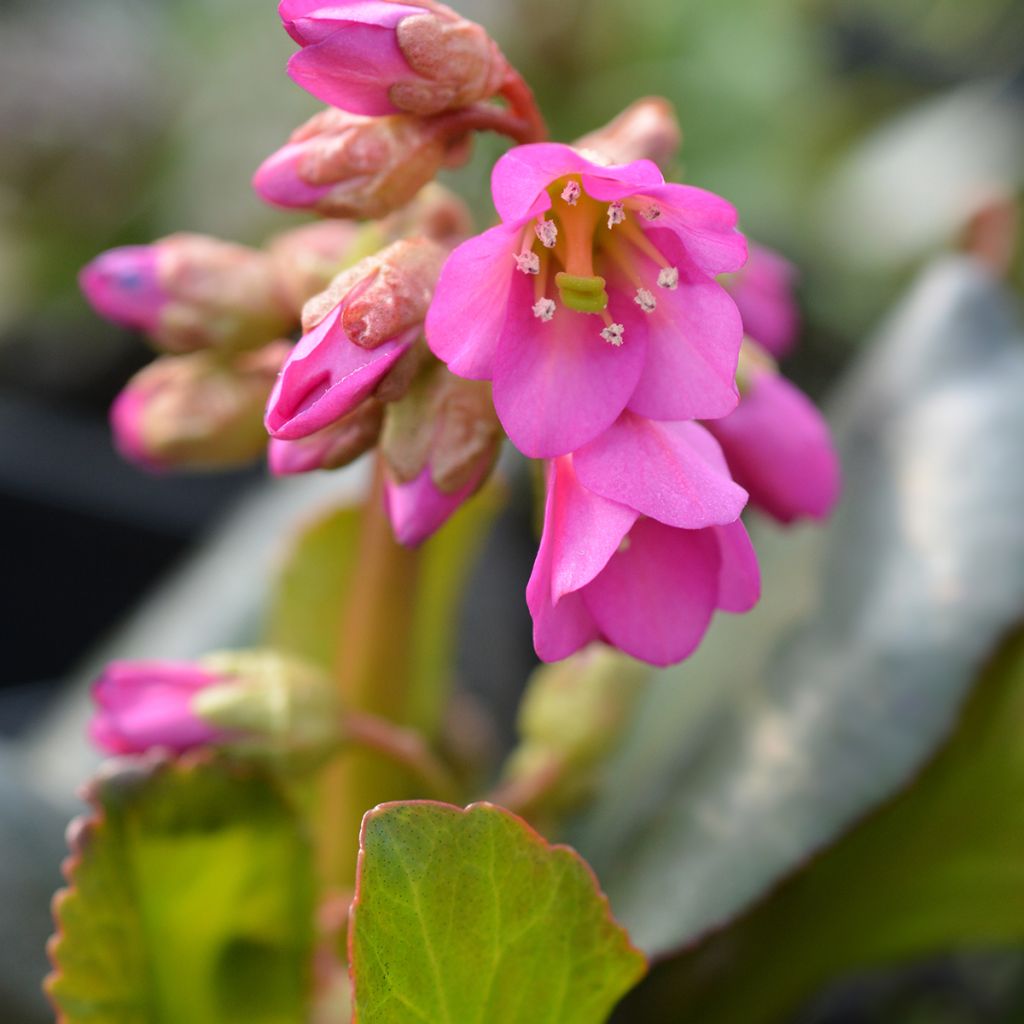

Bergenia Winterglut - Elephant's Ears
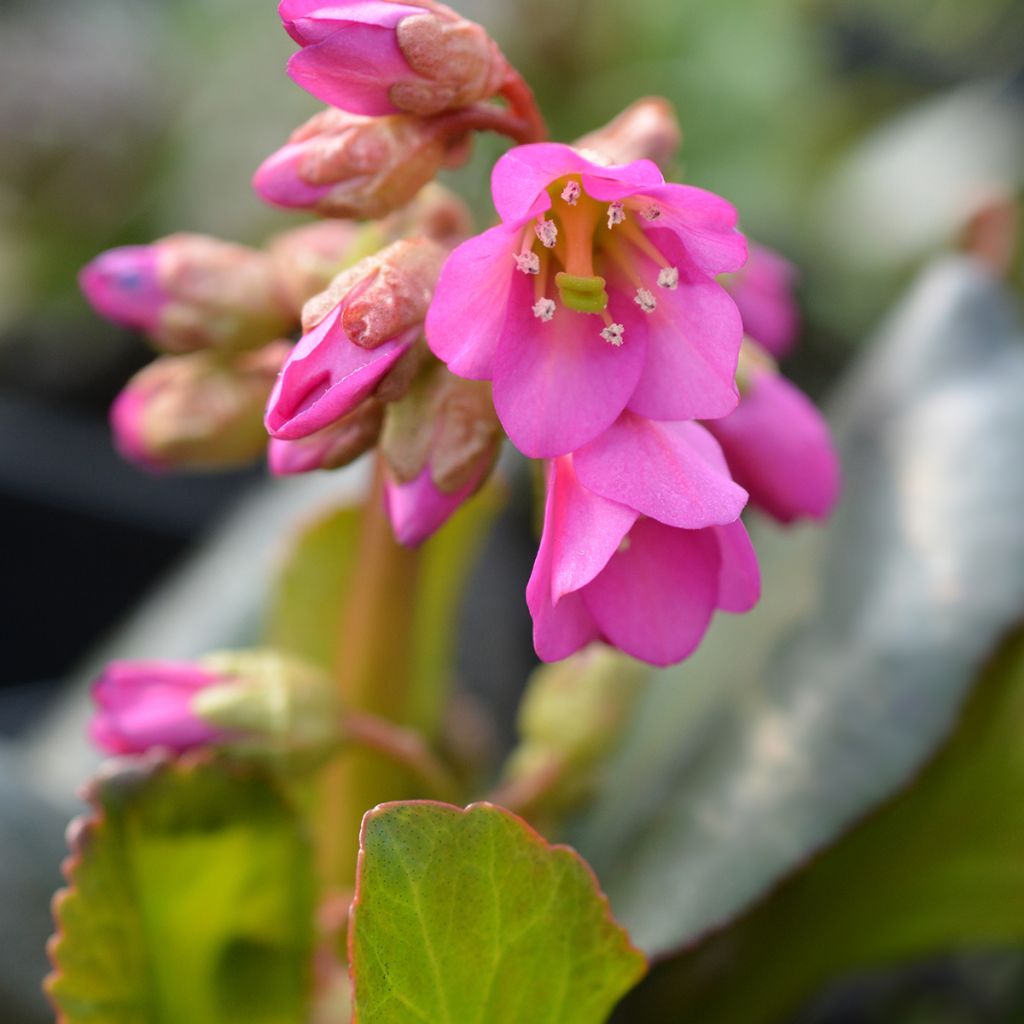

Bergenia Winterglut - Elephant's Ears
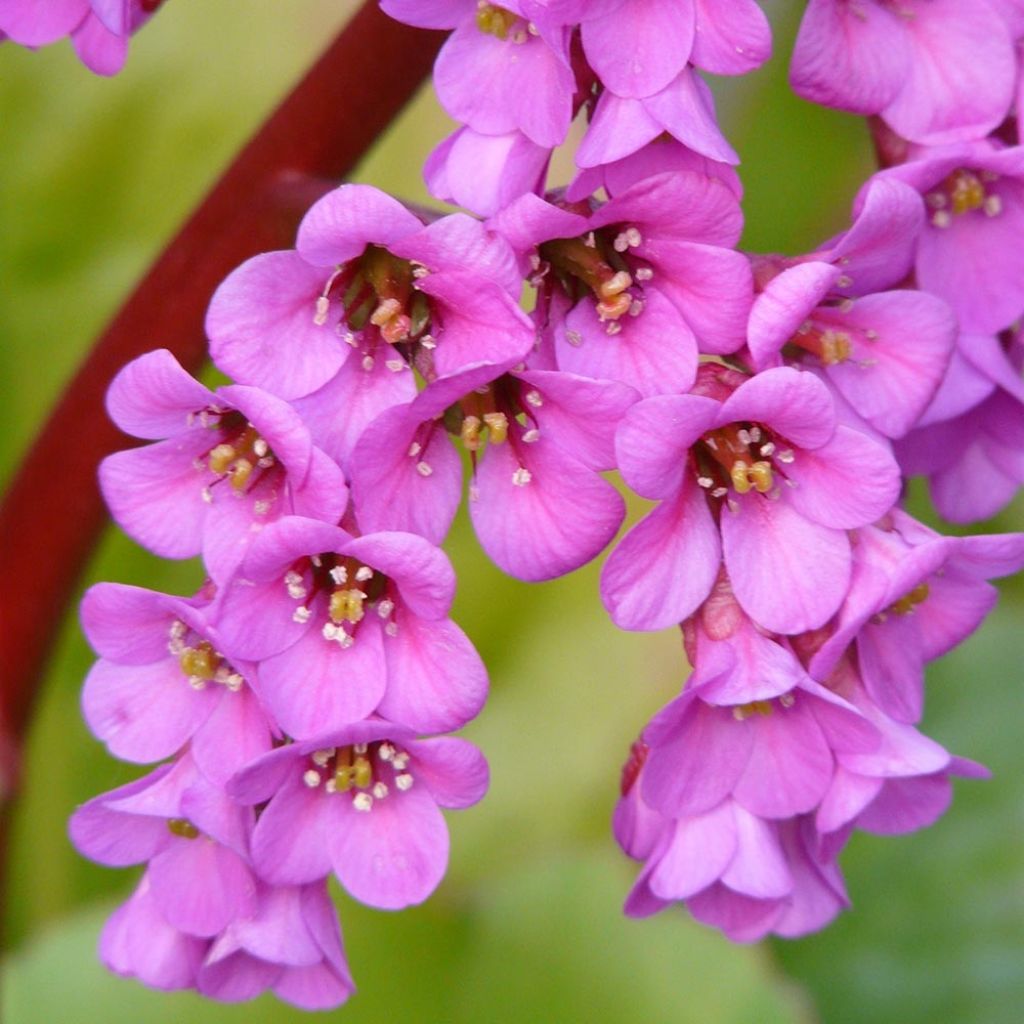

Bergenia Winterglut - Elephant's Ears
Bergenia Winterglut - Elephant's Ears
Bergenia Winterglut
Elephant's Ears, Heartleaf Bergenia, Pigsqueak
It is noted that it can be planted in the shade, but upon closer reading, it is stated that it does not flower in the shade. And I can confirm, it does not flower in the shade!! So it's a bit of a shame to sell it for shade if it doesn't thrive there. The leaves are not particularly beautiful and do not warrant purchasing it if there are no flowers.
Anaïs, 22/01/2022
This item cannot be shipped to the selected country
Delivery charge from €5.90
More information
Schedule delivery date,
and select date in basket
This plant carries a 12 months recovery warranty
More information
We guarantee the quality of our plants for a full growing cycle, and will replace at our expense any plant that fails to recover under normal climatic and planting conditions.
From €5.90 for pickup delivery and €6.90 for home delivery
Express home delivery from €8.90.
Does this plant fit my garden?
Set up your Plantfit profile →
Description
The entire 'Winterglut' Bergenia is adorned with flamboyant red hues throughout the seasons. Its late spring flowers in intense magenta cymes are borne on thick reddish-pink stems. Its large evergreen leaves initially green turn a vivid red in autumn, enhancing the garden throughout autumn and winter! This rhizomatous perennial with a spreading bushy habit forms a dense carpet over time, capable of colonizing even the most inhospitable spaces. It is a perfect ground cover, in the shade of a tree or in a sunny rockery. Dry and hot locations should be avoided. Hardy, undemanding, and extremely resilient, it is essential in gardens with limited light, with well-drained, fairly moist, and humus-rich soil.
The 'Winterglut' Bergenia is a plant from the Saxifragaceae family. Of hybrid and horticultural origin, it is an improvement on the variety B. 'Rotblum'. It is an evergreen herbaceous perennial, reaching approximately 45cm (18in) in height, with vegetation gathered in tight clumps about 40cm (16in) wide. It grows on a creeping, thick rhizome enveloped by the sheaths of the base of the leaves. Over time, this plant spreads, but its growth is so slow that it can hardly be considered invasive. Secondary stems appear here and there, eventually forming a beautiful carpet. The tough, glossy, heart-shaped leaves, measuring 30 to 50cm (12 to 20in) wide, are arranged in shiny rosettes. They are very thick and have dentate edges. The bell-shaped flowers, grouped in upright panicles, appear from May to June. Honey-scented, they are borne on rigid, ramified stems that rise well above the foliage and can be used for making bouquets.
The 'Winterglut' Bergenia will thrive in most soils, but a humus-rich, moist soil is preferable. It tolerates sea spray and calcareous soils. Overly dry soils tend to limit its growth. It will flourish in shade, partial shade, or in a sunny position that is not scorching: dense shade should be avoided, as it does not flower, as well as intense sunlight. Cold weather and poor soils enhance its colours. If you are looking for an elegant and sturdy perennial that will always be attractive, look no further than this bergenia. It can be advantageously used in pots, containers, rockeries, borders, or as a small ground cover, or at the base of deciduous bushes that allow winter sun but protect it from its summer heat. It can be combined, to border a pathway, with perennial geraniums (Geranium macrorrhizum), primroses, and in woodland areas with creeping bugles, oriental Hellebores, Hostas, Rodgersias, Astilbes.
Report an error about the product description
Bergenia Winterglut - Elephant's Ears in pictures
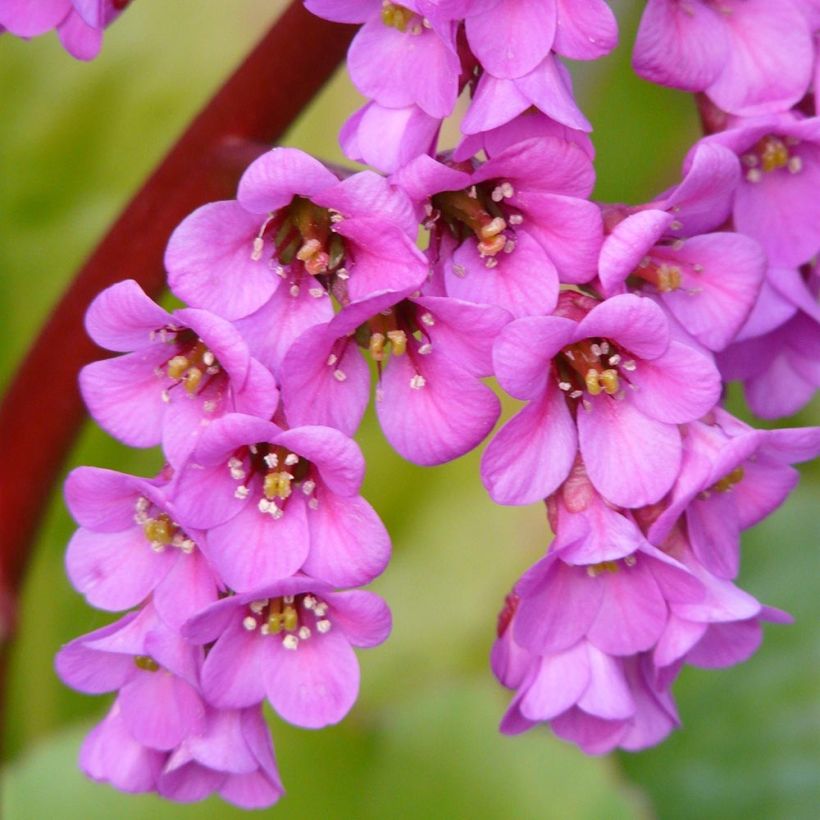

Flowering
Foliage
Plant habit
Botanical data
Bergenia
Winterglut
Saxifragaceae
Elephant's Ears, Heartleaf Bergenia, Pigsqueak
Cultivar or hybrid
Other Bergenia
Planting and care
Bergenia 'Winterglut' will grow well in most soils, but a soil rich in humus and moist is preferable. Too dry soils tend to hinder the growth of the young plant. It will thrive in shade, partial shade or sunny position but not scorching: dense shade should be avoided, where it does not flower, as well as strong sun exposure. Cold and poor soils enhance its colors. Clumps can be planted in spring or autumn, spacing the plants 40 to 50cm (16 to 20in) apart. To propagate, rhizomes can be divided at the end of winter. Although a good fertilizer is beneficial to the growth of this plant, care should be taken not to overly enrich the soil with nitrogen to promote flowering. Remove all withered leaves in spring, spread balanced fertilizer after flowering to encourage new shoots. Watch out for the appearance of slugs and snails in spring.
Planting period
Intended location
Care
-
, onOrder confirmed
Reply from on Promesse de fleurs
Spring flowering perennials
Haven't found what you were looking for?
Hardiness is the lowest winter temperature a plant can endure without suffering serious damage or even dying. However, hardiness is affected by location (a sheltered area, such as a patio), protection (winter cover) and soil type (hardiness is improved by well-drained soil).

Photo Sharing Terms & Conditions
In order to encourage gardeners to interact and share their experiences, Promesse de fleurs offers various media enabling content to be uploaded onto its Site - in particular via the ‘Photo sharing’ module.
The User agrees to refrain from:
- Posting any content that is illegal, prejudicial, insulting, racist, inciteful to hatred, revisionist, contrary to public decency, that infringes on privacy or on the privacy rights of third parties, in particular the publicity rights of persons and goods, intellectual property rights, or the right to privacy.
- Submitting content on behalf of a third party;
- Impersonate the identity of a third party and/or publish any personal information about a third party;
In general, the User undertakes to refrain from any unethical behaviour.
All Content (in particular text, comments, files, images, photos, videos, creative works, etc.), which may be subject to property or intellectual property rights, image or other private rights, shall remain the property of the User, subject to the limited rights granted by the terms of the licence granted by Promesse de fleurs as stated below. Users are at liberty to publish or not to publish such Content on the Site, notably via the ‘Photo Sharing’ facility, and accept that this Content shall be made public and freely accessible, notably on the Internet.
Users further acknowledge, undertake to have ,and guarantee that they hold all necessary rights and permissions to publish such material on the Site, in particular with regard to the legislation in force pertaining to any privacy, property, intellectual property, image, or contractual rights, or rights of any other nature. By publishing such Content on the Site, Users acknowledge accepting full liability as publishers of the Content within the meaning of the law, and grant Promesse de fleurs, free of charge, an inclusive, worldwide licence for the said Content for the entire duration of its publication, including all reproduction, representation, up/downloading, displaying, performing, transmission, and storage rights.
Users also grant permission for their name to be linked to the Content and accept that this link may not always be made available.
By engaging in posting material, Users consent to their Content becoming automatically accessible on the Internet, in particular on other sites and/or blogs and/or web pages of the Promesse de fleurs site, including in particular social pages and the Promesse de fleurs catalogue.
Users may secure the removal of entrusted content free of charge by issuing a simple request via our contact form.
The flowering period indicated on our website applies to countries and regions located in USDA zone 8 (France, the United Kingdom, Ireland, the Netherlands, etc.)
It will vary according to where you live:
- In zones 9 to 10 (Italy, Spain, Greece, etc.), flowering will occur about 2 to 4 weeks earlier.
- In zones 6 to 7 (Germany, Poland, Slovenia, and lower mountainous regions), flowering will be delayed by 2 to 3 weeks.
- In zone 5 (Central Europe, Scandinavia), blooming will be delayed by 3 to 5 weeks.
In temperate climates, pruning of spring-flowering shrubs (forsythia, spireas, etc.) should be done just after flowering.
Pruning of summer-flowering shrubs (Indian Lilac, Perovskia, etc.) can be done in winter or spring.
In cold regions as well as with frost-sensitive plants, avoid pruning too early when severe frosts may still occur.
The planting period indicated on our website applies to countries and regions located in USDA zone 8 (France, United Kingdom, Ireland, Netherlands).
It will vary according to where you live:
- In Mediterranean zones (Marseille, Madrid, Milan, etc.), autumn and winter are the best planting periods.
- In continental zones (Strasbourg, Munich, Vienna, etc.), delay planting by 2 to 3 weeks in spring and bring it forward by 2 to 4 weeks in autumn.
- In mountainous regions (the Alps, Pyrenees, Carpathians, etc.), it is best to plant in late spring (May-June) or late summer (August-September).
The harvesting period indicated on our website applies to countries and regions in USDA zone 8 (France, England, Ireland, the Netherlands).
In colder areas (Scandinavia, Poland, Austria...) fruit and vegetable harvests are likely to be delayed by 3-4 weeks.
In warmer areas (Italy, Spain, Greece, etc.), harvesting will probably take place earlier, depending on weather conditions.
The sowing periods indicated on our website apply to countries and regions within USDA Zone 8 (France, UK, Ireland, Netherlands).
In colder areas (Scandinavia, Poland, Austria...), delay any outdoor sowing by 3-4 weeks, or sow under glass.
In warmer climes (Italy, Spain, Greece, etc.), bring outdoor sowing forward by a few weeks.

































